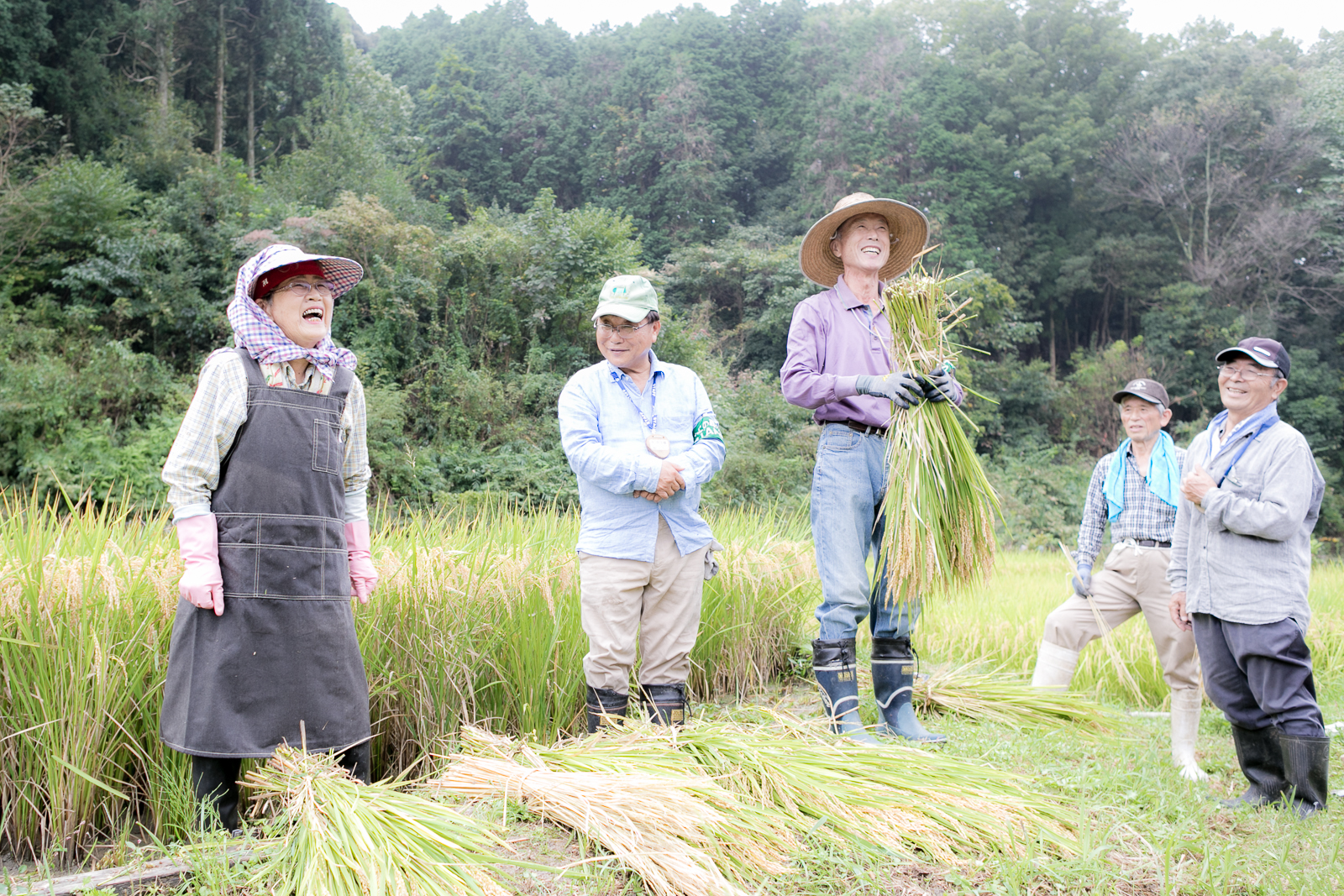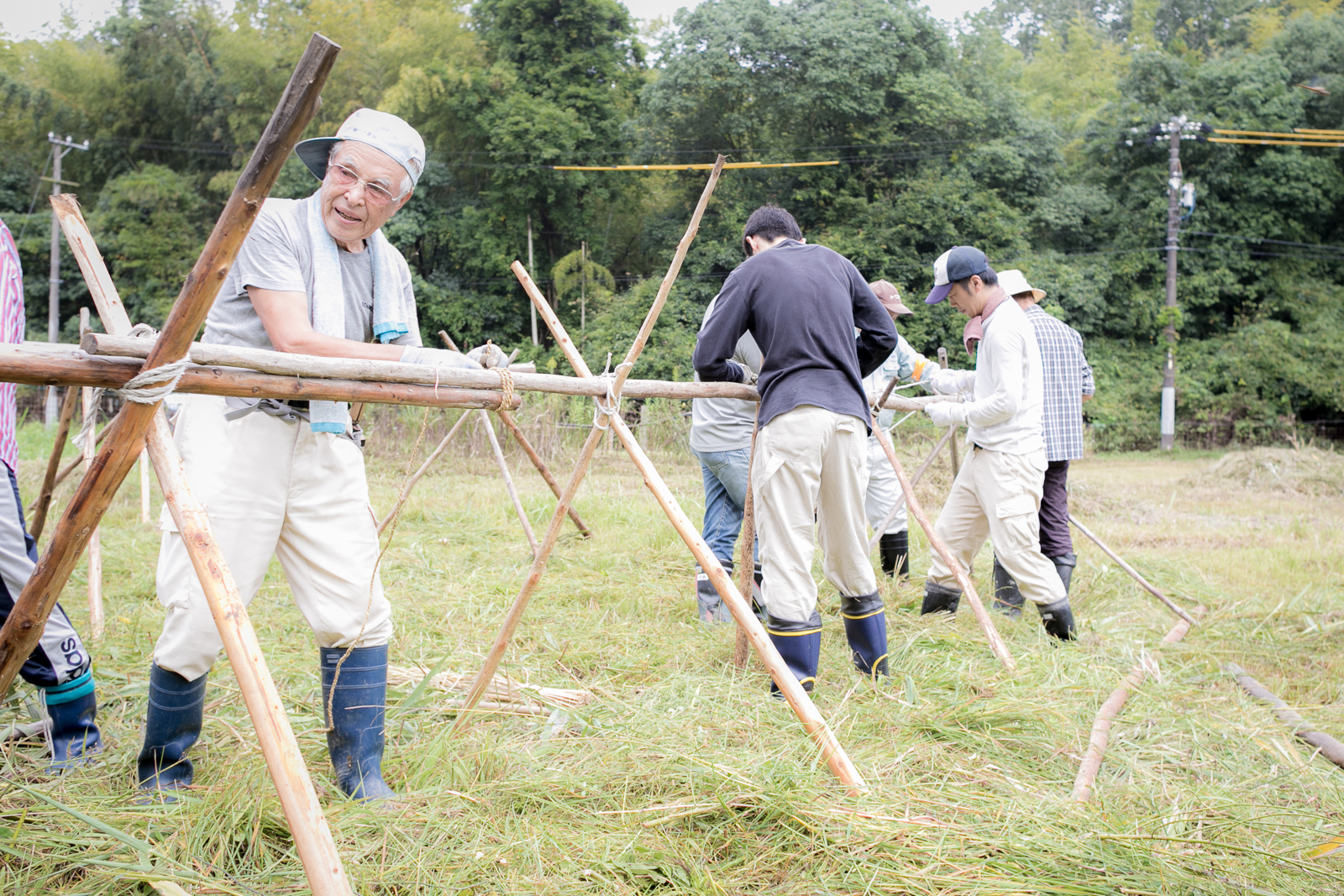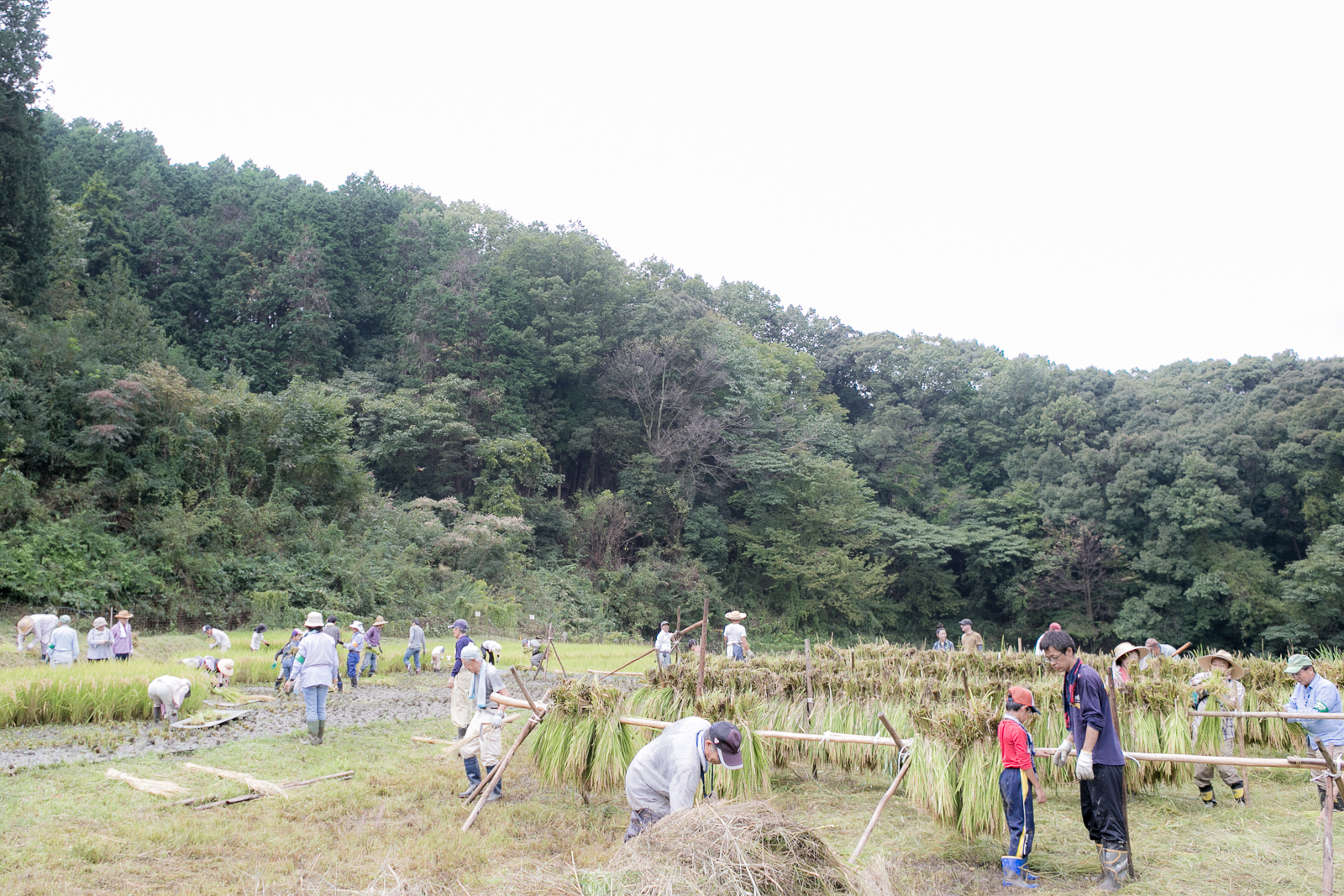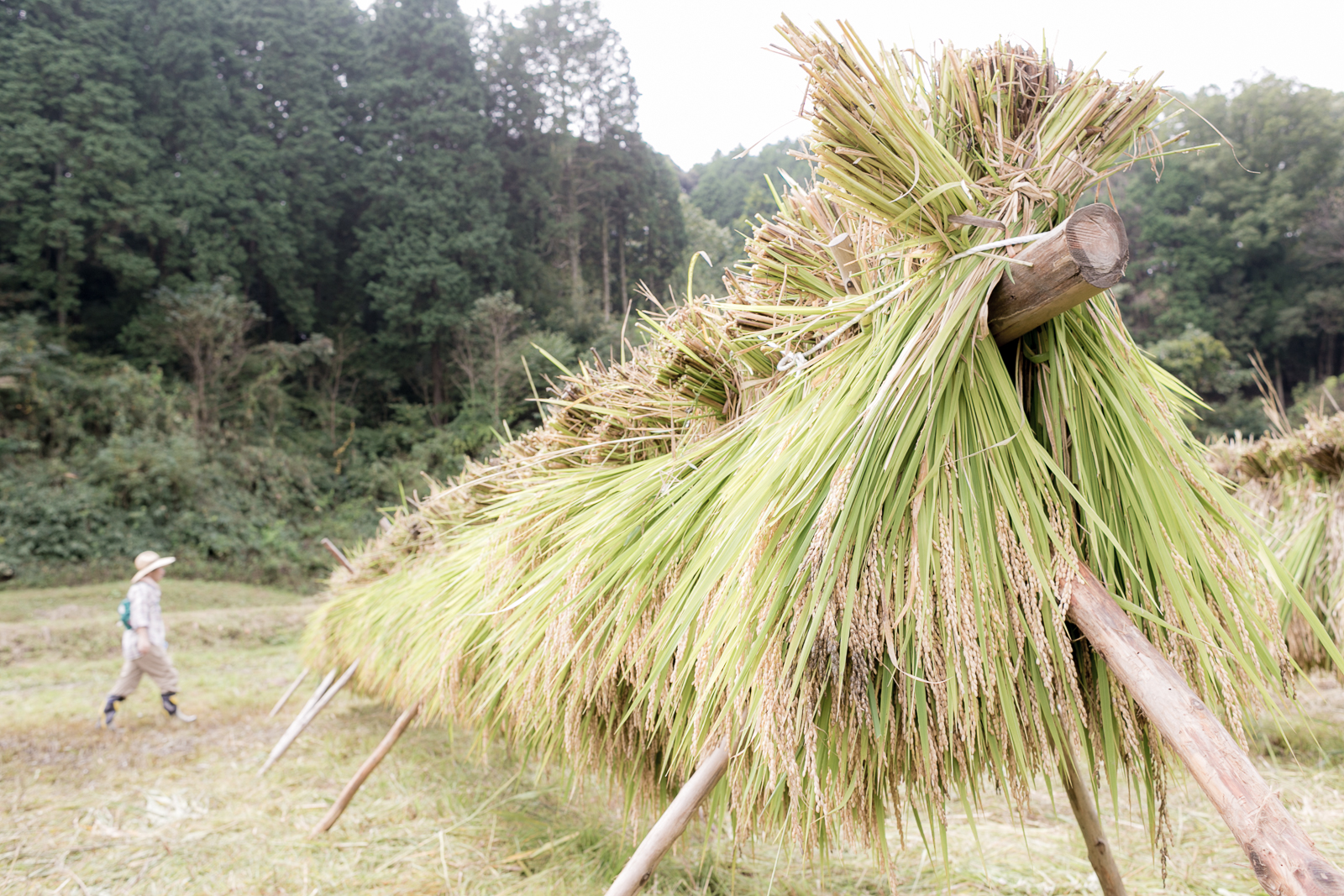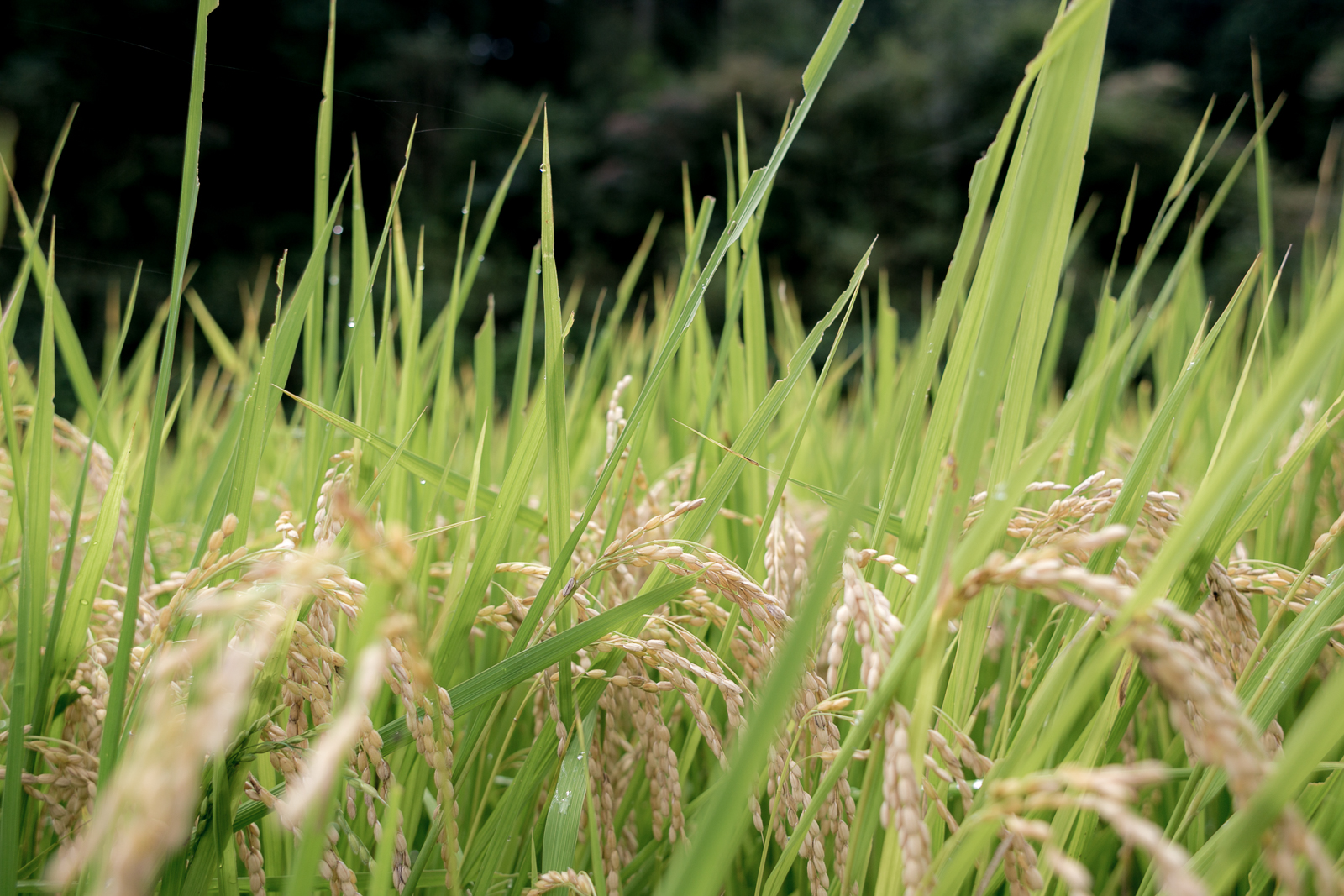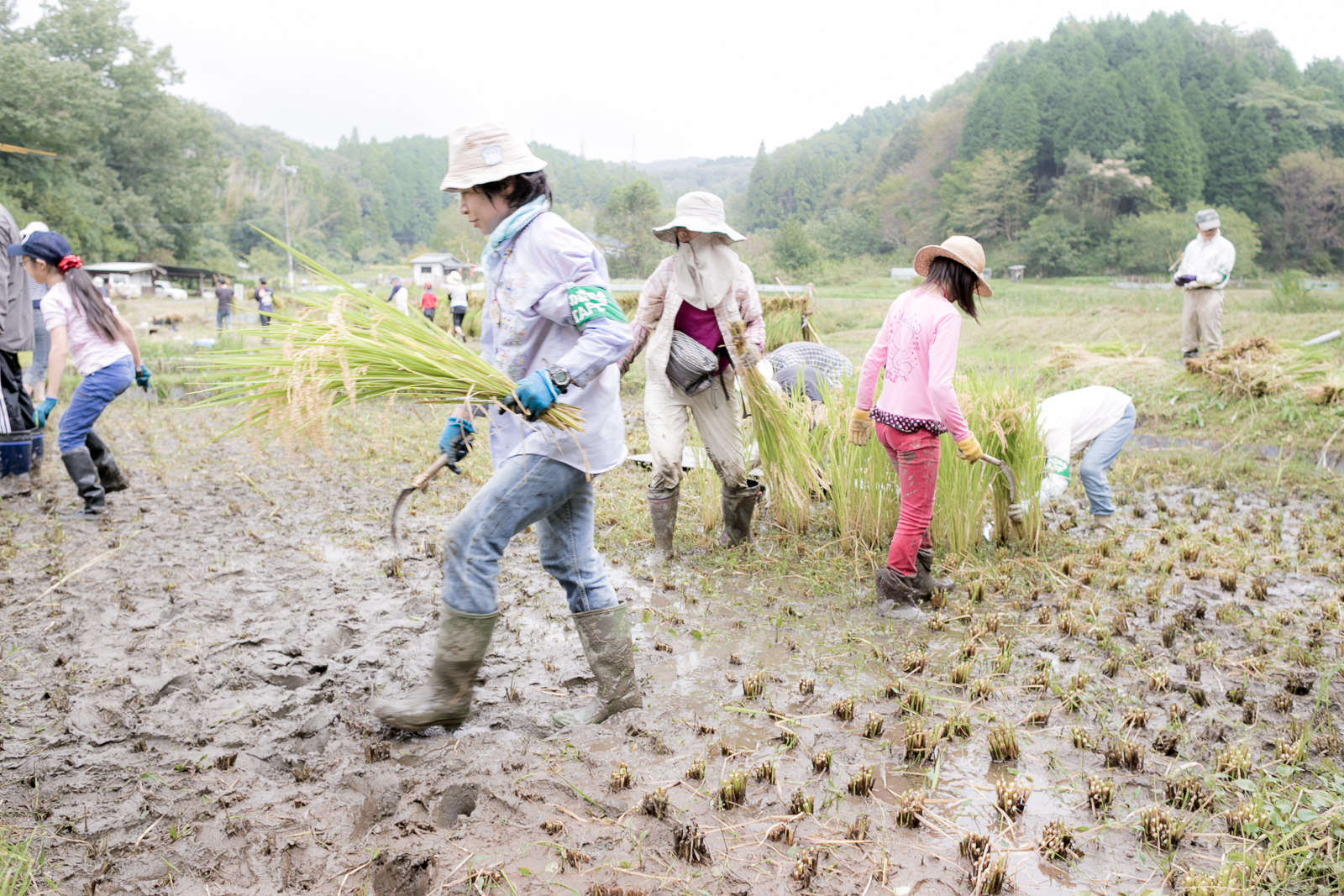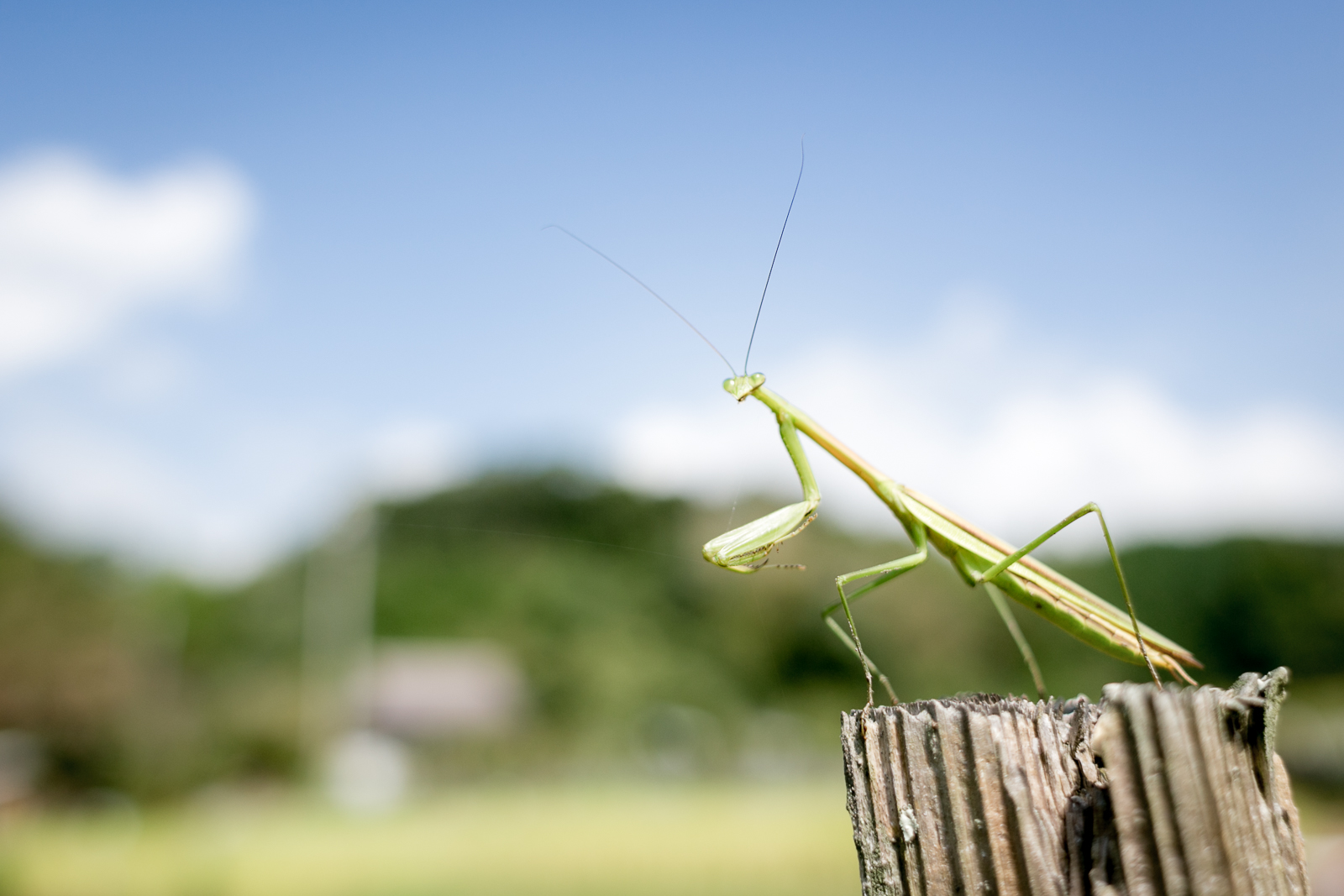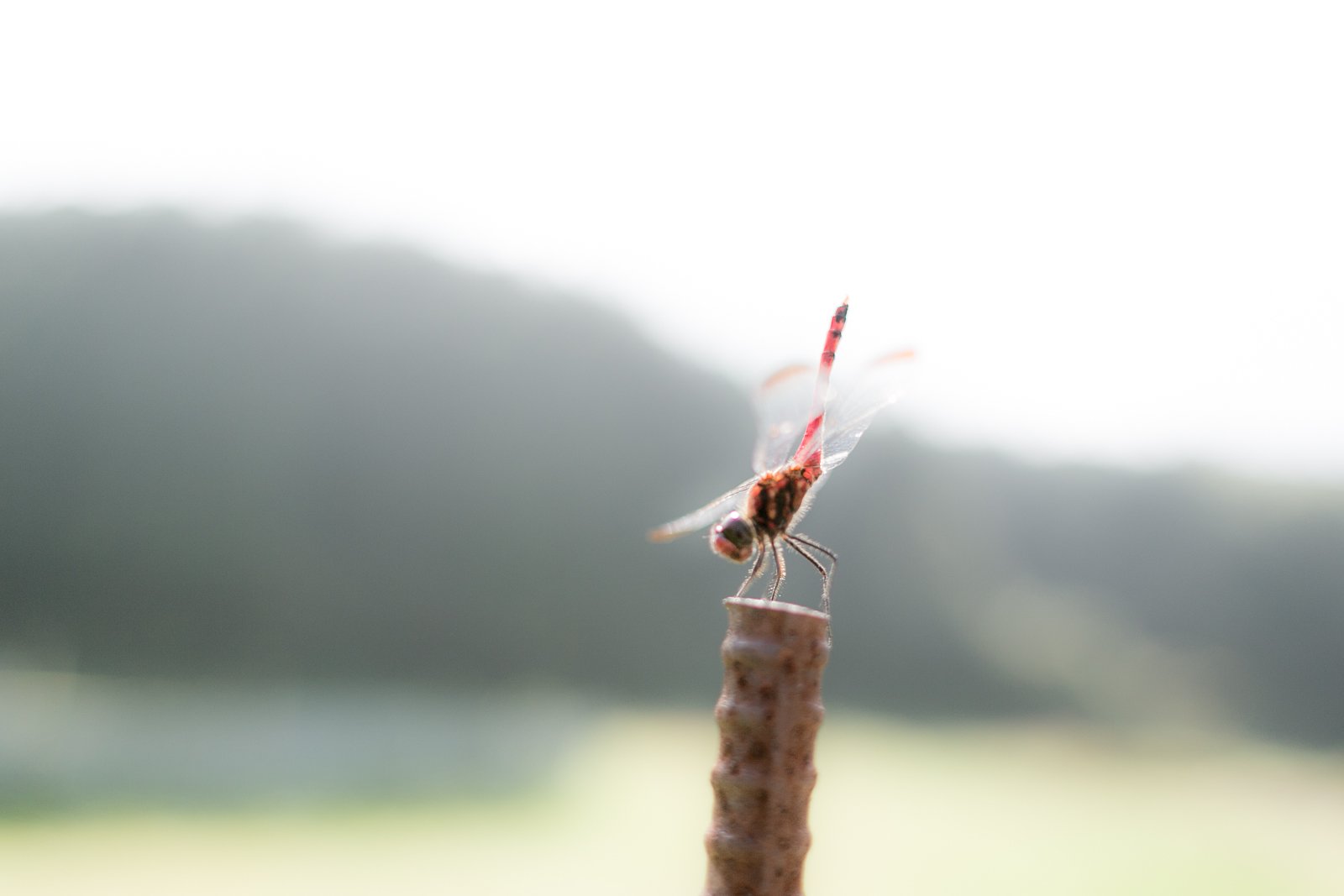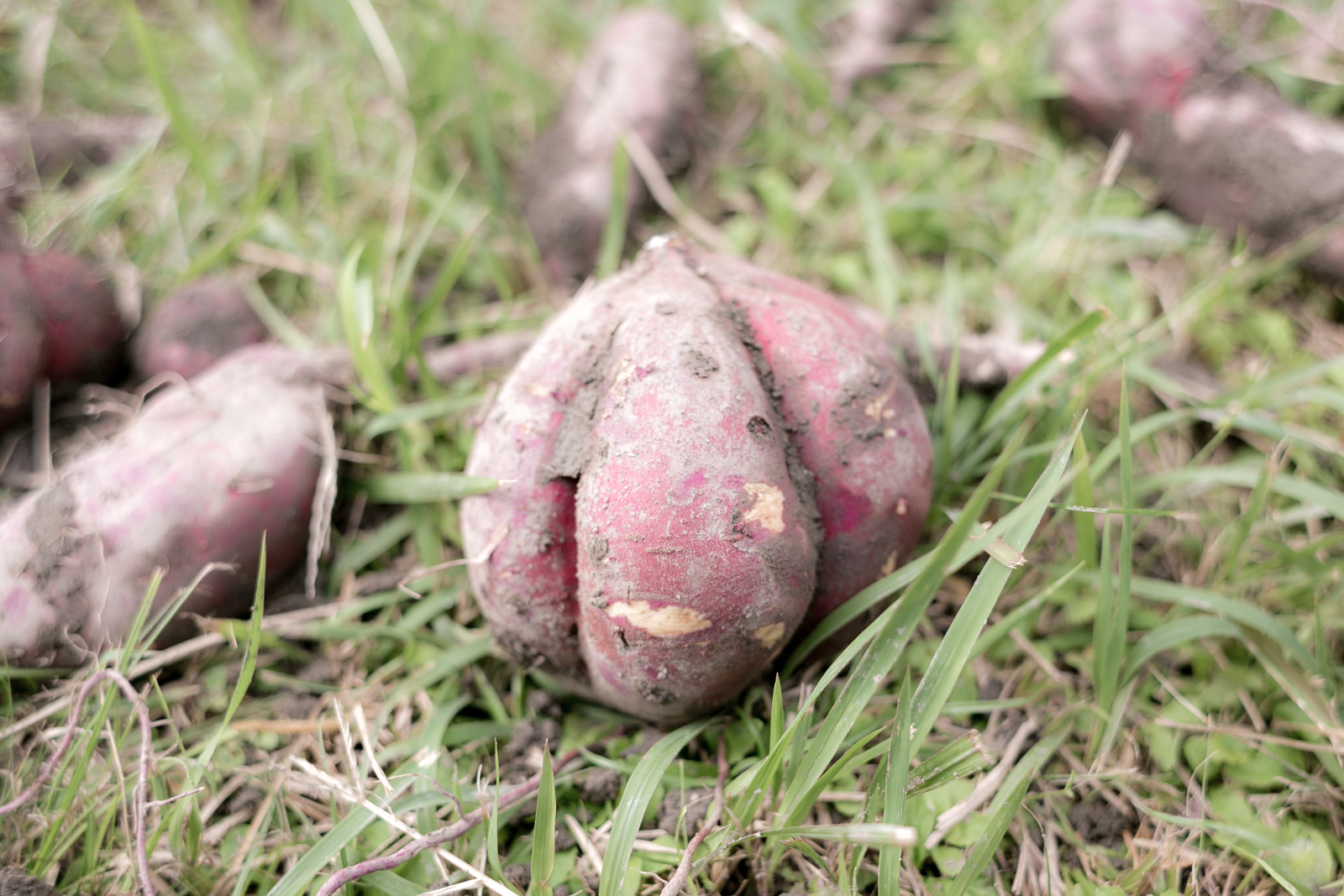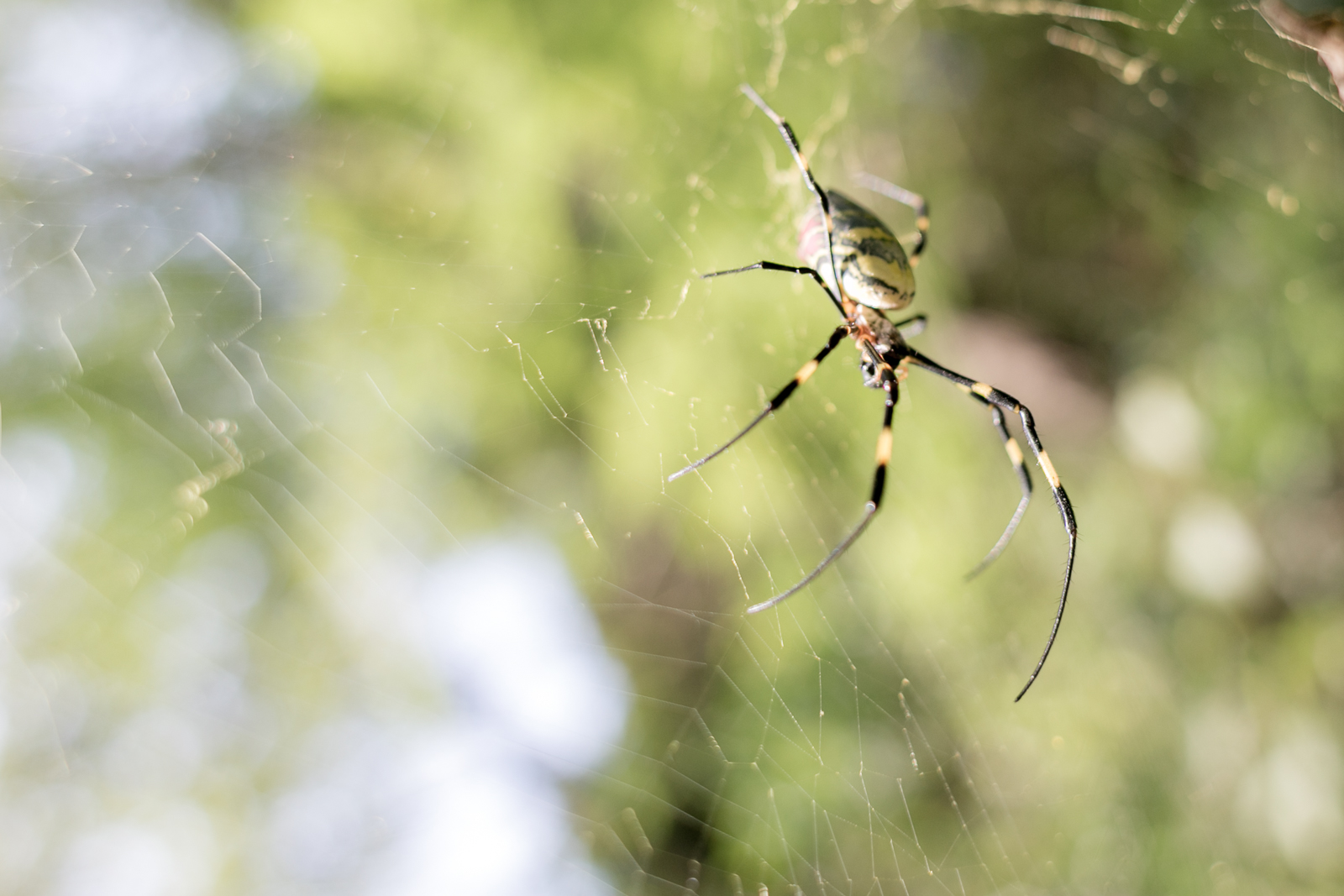Last Sunday, we went out to the farm in Seto again to harvest rice. We joined a program through the city where you spend eight Sundays throughout the year on the farm, learning about farming techniques. In the spring, we planted the rice shoots by hand. Then, in the summer, we pulled weeds from the sodden fields. This time, we cut the rice with "kama" sickles. We cut them in bunches of three, and then the bunches were tied with a dried rice shoot and hung to dry. The old farm lady who demonstrated the technique made it all look very easy. She whacked the shoots, chop chop chop, then tied them, saying, "You just grab the husk, spin it around the rice shoots, tuck it in here, and that's it!" It turned out to not be as easy as she made it seem. Eventually, I got pretty fast with the kama, but as you cut farther and farther into the field, the walk to carry the rice shoots back to the dry bank gets longer, and due to all the rain we've had recently, the mud was thick and gloopy. At one point I lost my concentration and went into the mud, to the delight of the old farmers standing nearby. The rice fields were full of life-- crickets, grasshoppers, spiders, frogs, lizards-- that all retreated into the middle of the field as their habitat was chopped down from the edges, so that by the time the last clump of rice shoots in the middle of the paddy were cut down, there was a mass scattering of critters across the wet mud, looking for new shelter. All in all, it was a tiring, but rewarding day. I didn't want to look like a lazy foreigner, so I made sure to put in my share of work, but I also couldn't resist grabbing my camera whenever I could sneak in a break. I had only my little 28mm prime lens, which is light and easy to use in tight spaces. My camera looked pretty muddy and gunked up by the end of the day, but I cleaned it well when I got home.
